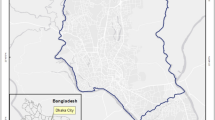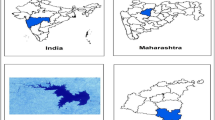Abstract
Monitoring water surface dynamics is essential for the management of lakes and reservoirs, especially those are intensively impacted by human exploitation and climatic variation. Although modern satellites have provided a superior solution over traditional methods in monitoring water surfaces, manually downloading and processing imagery associated with large study areas or long-time scales are time-consuming. The Google Earth Engine (GEE) platform provides a promising solution for this type of “big data” problems when it is combined with the automatic water extraction index (AWEI) to delineate multi-temporal water pixels from other forms of land use/land cover. The aim of this study is to assess the performance of a completely automatic water extraction framework by combining AWEI, GEE, and Landsat 8 OLI data over the period 2014–2018 in the case study of New Zealand. The overall accuracy (OA) of 0.85 proved the good performance of this combination. Therefore, the framework developed in this research can be used for lake and reservoir monitoring and assessment in the future. We also found that despite the temporal variability of climate during the period 2014–2018, the spatial areas of most of the lakes (3840) in the country remained the same at around 3742 km2. Image fusion or aerial photos can be employed to check the areal variation of the lakes at a finer scale.







Similar content being viewed by others
Change history
02 September 2020
In the published article:"An automatic water detection approach using Landsat 8 OLI and Google Earth Engine cloud computing to map lakes and reservoirs in New Zealand", the Acknowledgements was published incorrectly and funding statement was missing.
References
Bai, J., Chen, X., Li, J., Yang, L., & Fang, H. (2011). Changes in the area of inland lakes in arid regions of central Asia during the past 30 years. Environmental Monitoring and Assessment, 178(1–4), 247–256.
Cann, K. F., Thomas, D. R., Salmon, R. L., Wyn-Jones, A. P., & Kay, D. (2013). Extreme water-related weather events and waterborne disease. Epidemiology & Infection, 141(4), 671–686.
Christensen, N. S., Wood, A. W., Voisin, N., Lettenmaier, D. P., & Palmer, R. N. (2004). The effects of climate change on the hydrology and water resources of the Colorado River basin. Climatic Change, 62(1–3), 337–363.
Cohen, J. (1960). A coefficient of agreement for nominal scale. Educational and Psychological Measurement, 20, 37–46.
Danaher, T., & Collett, L. (2006). Development, optimization and multi-temporal application of a simple Landsat based water index. The 13th Australasian Remote Sensing and Photogrammetry Conference. Canberra.
Dang, T. D., Cochrane, T. A., Arias, M. E., Van, P. D. T., & de Vries, T. T. (2016). Hydrological alterations from water infrastructure development in the Mekong floodplains. Hydrological Processes, 30(21), 3824–3838.
Dang, T. D., Cochrane, T. A., Arias, M. E., & Van, P. D. T. (2018a). Future hydrological alterations in the Mekong Delta under the impact of water resources development, land subsidence and sea level rise. Journal of Hydrology: Regional Studies, 15, 119–133.
Dang, T. D., Cochrane, T. A., & Arias, M. E. (2018b). Quantifying suspended sediment dynamics in mega deltas using remote sensing data: a case study of the Mekong floodplains. International Journal of Applied Earth Observation and Geoinformation, 68, 105–115.
Donchyts, G., Schellekens, J., Winsemius, H., Eisemann, E., & van de Giesen, N. (2016). A 30 m resolution surface water mask including estimation of positional and thematic differences using landsat 8, srtm and openstreetmap: a case study in the Murray-Darling Basin, Australia. Remote Sensing, 8(5), 386.
Duan, Z., & Bastiaanssen, W. (2013). Estimating water volume variations in lakes and reservoirs from four operational satellite altimetry databases and satellite imagery data. Remote Sensing of Environment, 134, 403–416.
Feng, M., Sexton, J. O., Channan, S., & Townshend, J. R. (2016). A global, high-resolution (30-m) inland water body dataset for 2000: first results of a topographic–spectral classification algorithm. International Journal of Digital Earth, 9(2), 113–133.
Feyisa, G. L., Meilby, H., Fensholt, R., & Proud, S. R. (2014). Automated Water Extraction Index: a new technique for surface water mapping using Landsat imagery. Remote Sensing of Environment, 140, 23–35.
Fisher, A., Flood, N., & Danaher, T. (2016). Comparing Landsat water index methods for automated water classification in eastern Australia. Remote Sensing of Environment, 175, 167–182.
Gao, Y., Riklin-Raviv, T., & Bouix, S. (2014). Shape analysis, a field in need of careful validation. Human Brain Mapping, 35(10), 4965–4978. https://doi.org/10.1002/hbm.22525.
Giardino, C., Bresciani, M., Villa, P., & Martinelli, A. (2010). Application of remote sensing in water resource management: the case study of Lake Trasimeno, Italy. Water Resources Management, 24, 3885–3899.
Gleick, P. H. (1989). Climate change, hydrology, and water resources. Reviews of Geophysics, 27(3), 329–344.
Gorelick, N., Hancher, M., Dixon, M., Ilyushchenko, S., Thau, D., & Moore, R. (2017). Google Earth Engine: planetary-scale geospatial analysis for everyone. Remote Sensing of Environment, 202, 18–27.
Güttler, F. N., Niculescu, S., & Gohin, F. (2013). Turbidity retrieval and monitoring of Danube Delta waters using multi-sensor optical remote sensing data: an integrated view from the delta plain lakes to the western–northwestern Black Sea coastal zone. Remote Sensing of Environment, 132, 86–101.
Hui, F., Xu, B., Huang, H., Yu, Q., & Gong, P. (2008). Modelling spatial-temporal change of Poyang Lake using multitemporal Landsat imagery. International Journal of Remote Sensing, 29, 5767–5784.
Ji, L., Zhang, L., & Wylie, B. (2009). Analysis of dynamic thresholds for the normalized difference water index. Photogrammetric Engineering & Remote Sensing, 75, 1307–1317.
Leathwick, J. R., West, D., Gerbeaux, P., Kelly, D., Robertson, H., Bronwn, D., Chadderton, W. L., & Ausseil, A.-G. (2010). Freshwater ecosystems of New Zealand (FENZ) geodatabase version one - user guide. Wellington: NIWA.
Li, W., Du, Z., Ling, F., Zhou, D., Wang, H., Gui, Y., Sun, B., & Zhang, X. (2013). A comparison of land surface water mapping using the normalized difference water index from TM, ETM+ and ALI. Remote Sensing, 5, 5530–5549.
LINZ. NZ Aerial Imagery. Sourced from the LINZ Data Service (https://data.linz.govt.nz/) and licensed by the copyright holder for re-use under the Creative Commons Attribution 3.0 New Zealand. Accessed 15 Jan 2018
Lowe, D. J., & Green, J. D. (1992). Lakes. In J. M. Soons & M. J. Selby (Eds.), Landforms of New Zealand (2nd ed., p. 108). Auckland: Longman Paul.
Lymburner, L., Botha, E., Hestir, E., Anstee, J., Sagar, S., Dekker, A., & Malthus, T. (2016). Landsat 8: providing continuity and increased precision for measuring multi-decadal time series of total suspended matter. Remote Sensing of Environment, 185, 108–118.
McCullough, I. M., Loftin, C. S., & Sader, S. A. (2013). Lakes without Landsat? An alternative approach to remote lake monitoring with MODIS 250 m imagery. Lake and Reservoir Management, 29(2), 89–98.
Mcfeeters, S. K. (1996). The use of the Normalized Difference Water Index (NDWI) in the delineation of open water features. International Journal of Remote Sensing, 17, 1425–1432.
New Zealand statistics. (2006). New Zealand in profile (p. 30). Wellington: Statistics New Zealand.
Nguyen, U. (2015). Multiscale remote sensing analysis to monitor riparian and upland semi-arid vegetation. PhD Dissertation, University of Arizona, Tucson, Arizona.
Nguyen, U., Glenn, E. P., Nagler, P. L., & Scott, R. L. (2015). Long-term decrease in satellite vegetation indices in response to environmental variables in an iconic desert riparian ecosystem: The Upper San Pedro, Arizona, United States. Ecohydrol., 8, 608–623.
Nguyen, U., Glenn, E. P., Dang, T. D., & Pham, L. T. (2019). Mapping vegetation types in semi-arid riparian regions using random forest and object-based image approach: a case study of the Colorado River Ecosystem, Grand Canyon, Arizona. Ecological Informatics, 50, 43–50.
Olmanson, L. G., Brezonik, P. L., & Bauer, M. E. (2011). Evaluation of medium to low resolution satellite imagery for regional lake water quality assessments. Water Resources Research, 47, 1–14.
Ouma, Y. O., & Tateishi, R. (2006). A water index for rapid mapping of shoreline changes of five East African Rift Valley lakes: an empirical analysis using Landsat TM and ETM+ data. International Journal of Remote Sensing, 27, 3153–3181.
Pham, L. T., & Brabyn, L. (2017). Monitoring mangrove biomass change in Vietnam using SPOT images and an object-based approach combined with machine learning algorithms. ISPRS Journal of Photogrammetry and Remote Sensing, 128, 86–97.
Pham, L. T., Vo, T. Q., Dang, T. D., & Nguyen, U. T. (2019). Monitoring mangrove association changes in the Can Gio biosphere reserve and implications for management. Remote Sensing Applications: Society and Environment, 13, 298–305.
Prigent, C., Papa, F., Aires, F., Jimenez, C., Rossow, W., & Matthews, E. (2012). Changes in land surface water dynamics since the 1990s and relation to population pressure. Geophysical Research Letters, 39(8), L08403, 1–5.
Proud, S. R., Fensholt, R., Rasmussen, L. V., & Sandholt, I. (2011). Rapid response flood detection using the MSG geostationary satellite. International Journal of Applied Earth Observation and Geoinformation, 13, 536–544.
Qiao, C., Luo, J., Sheng, Y., Shen, Z., Zhu, Z., & Ming, D. (2012). An adaptive water extraction method from remote sensing image based on NDWI. Journal of the Indian Society of Remote Sensing, 40, 421–433.
Shelestov, A., Lavreniuk, M., Kussul, N., Novikov, A., & Skakun, S. (2017). Large scale crop classification using Google earth engine platform. In Geoscience and Remote Sensing Symposium (IGARSS), 2017 IEEE International (pp. 3696–3699). IEEE.
Sun, F., Sun, W., Chen, J., & Gong, P. (2012). Comparison and improvement of methods for identifying waterbodies in remotely sensed imagery. International Journal of Remote Sensing, 33, 6854–6875.
Tang, Z., Li, Y., Gu, Y., Jiang, W., Xue, Y., Hu, Q., & Li, R. (2016). Assessing Nebraska playa wetland inundation status during 1985–2015 using Landsat data and Google Earth Engine. Environmental Monitoring and Assessment, 188(12), 654.
Verpoorter, C., Kutser, T., & Tranvik, L. (2012). Automated mapping of water bodies using Landsat multispectral data. Limnology and Oceanography: Methods, 10, 1037–1050.
Wolter, K., & Timlin, M. S. (1998). Measuring the strength of ENSO - how does 1997/98 rank? Weather, 53, 315–324.
Wood, E. F., Roundy, J. K., Troy, T. J., Van Beek, L. P. H., Bierkens, M. F., Blyth, E., et al. (2011). Hyperresolution global land surface modeling: meeting a grand challenge for monitoring Earth’s terrestrial water. Water Resources Research, 47(5), W05301, 1–10.
Xu, H. (2006). Modification of normalised difference water index (NDWI) to enhance open water features in remotely sensed imagery. International Journal of Remote Sensing, 27, 3025–3033.
Acknowledgements
We wish to thank the editor in handling this paper, and we also acknowledge the anonymous reviewers for their great comments and edits which helped us to improve the quality of this paper significantly.
Author information
Authors and Affiliations
Corresponding author
Additional information
Publisher’s note
Springer Nature remains neutral with regard to jurisdictional claims in published maps and institutional affiliations.
Rights and permissions
About this article
Cite this article
Nguyen, U.N.T., Pham, L.T.H. & Dang, T.D. An automatic water detection approach using Landsat 8 OLI and Google Earth Engine cloud computing to map lakes and reservoirs in New Zealand. Environ Monit Assess 191, 235 (2019). https://doi.org/10.1007/s10661-019-7355-x
Received:
Accepted:
Published:
DOI: https://doi.org/10.1007/s10661-019-7355-x




